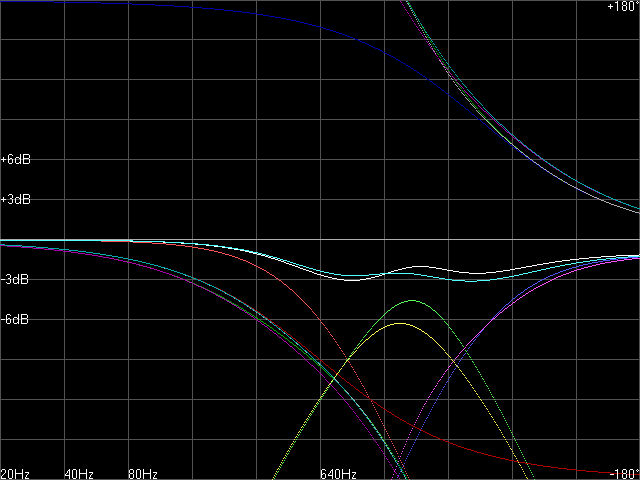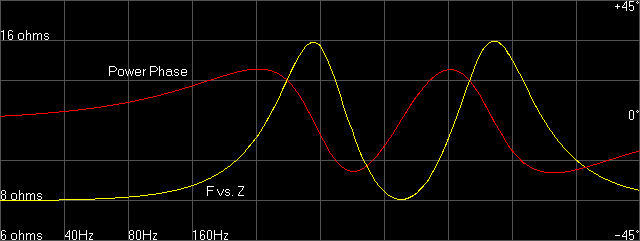
Theoretical performance of the crossover, in various wiring schemes,
showing amplitude and phase with correction for the differing relative efficiencies of the drivers.
|
Right about the beginning of 1998, I started on a software project I call Super_Z that
enables my computer to super accurately measure all of the necessary
parameters of individual speakers and the exact performance of crossover
systems over the entire audio spectrum.
Thousands of data points are collected and computer analyzed to yield all of the relevant information to design perfectly, mathematically optimized cabinets and crossovers. For the first time in my twenty years of speaker designing and building, I am able to close the design loop by actually measuring each drivers parameters for use as input to the design formulae, predicting the best designs of both the cabinets and the crossovers and then proving these designs and refining them with real measurements taken from real working speaker systems. |

Theoretical performance of the crossover, in various wiring schemes,
showing amplitude and phase with correction for the differing relative
efficiencies of the drivers.

Actual linear measurement of voltage sums from the output of each section
of the crossover, loaded with real drivers from 20Hz to 20KHz log scale.

Calculated frequency vs. power phase angle and Frequency vs. Impedance.

5 inch aluminum speaker frequency vs. impedance, 20Hz to 20KHz

First measurement of the uncorrected crossover.

Isolating the mid-range portion of the crossover.

Adding an impedance correcting network across the
terminals of the midrange.

Finally, the finished crossover, fully tweaked.

This is a mathematically generated prediction of the performance
of all four of the 5 inch aluminume cone woofers in their ported enclosure.

This is a mathematically generated prediction of the performance
of the 12 inch aluminume cone sub woofer in its ported enclosure.
All of the parameters used as input to the formulae that
made these graphs were actually measured from the drivers used.